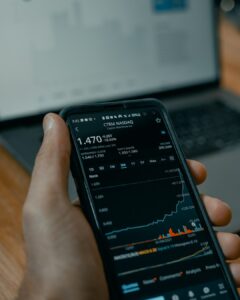Understanding the Differences Between Forex and Stock Markets
The foreign exchange (forex) market and the stock market are two of the largest financial markets in the world. Both markets offer opportunities for investors to make profits, but they operate in different ways and have distinct characteristics. Understanding the differences between forex and stock markets is crucial for anyone looking to venture into these markets.
1. Market Structure
The forex market is a decentralized market, which means that trading takes place over-the-counter (OTC) rather than on a centralized exchange. It operates 24 hours a day, five days a week, allowing investors to trade currencies at any time. In contrast, the stock market is centralized and operates on specific exchanges, such as the New York Stock Exchange (NYSE) or the London Stock Exchange (LSE), with specific trading hours.
2. Trading Instruments
In the forex market, the primary trading instrument is currency pairs. Traders speculate on the exchange rate between two currencies, such as the EUR/USD or GBP/JPY. On the other hand, the stock market involves trading individual company stocks. Investors can buy and sell shares of publicly listed companies, such as Apple, Microsoft, or Coca-Cola.
3. Market Size and Liquidity
The forex market is the largest financial market globally, with an average daily trading volume exceeding $6 trillion. This high liquidity makes it easy for traders to enter and exit positions quickly, even with large trading volumes. In contrast, the stock market is significantly smaller, with an average daily trading volume of around $200 billion. While this is still a substantial amount, it is relatively lower compared to the forex market.
4. Market Influence
The forex market is influenced by various factors, including economic indicators, geopolitical events, and central bank policies. Exchange rates are highly sensitive to these factors, and traders closely monitor news and events that could impact currency values. In contrast, the stock market is influenced by company-specific factors, such as earnings reports, mergers and acquisitions, and industry trends. Stock prices are influenced by the performance and prospects of individual companies.
5. Leverage and Margin Trading
Forex trading offers high leverage, allowing traders to control large positions with a small amount of capital. This means that traders can potentially earn significant profits, but it also increases the risk of losses. Leverage ratios in forex trading can range from 1:50 to 1:500, depending on the broker. In the stock market, leverage is less common, and margin trading is subject to stricter regulations. Generally, traders can borrow up to 50% of the value of their stock positions.
6. Market Volatility
Both forex and stock markets experience volatility, but they differ in terms of the factors that drive price movements. In the forex market, volatility is often driven by economic data releases, central bank decisions, and political events. Currency pairs can experience significant price swings within minutes or even seconds. In the stock market, volatility is driven by company-specific news, such as earnings announcements or product launches. Stock prices can also be influenced by broader market trends and investor sentiment.
7. Trading Hours
As mentioned earlier, the forex market operates 24 hours a day, five days a week. This allows traders to participate in the market at their convenience, regardless of their time zone. The stock market, however, has specific trading hours, usually aligned with the business hours of the country where the exchange is located. For example, the NYSE is open from 9:30 a.m. to 4:00 p.m. Eastern Time.
In conclusion, the forex market and the stock market have distinct characteristics that make them unique. Understanding these differences is essential for anyone looking to engage in trading or investing in these markets. From market structure to trading instruments, leverage, and volatility, each market presents its own set of opportunities and risks. By having a solid understanding of these differences, investors can make informed decisions and develop appropriate strategies for success.





